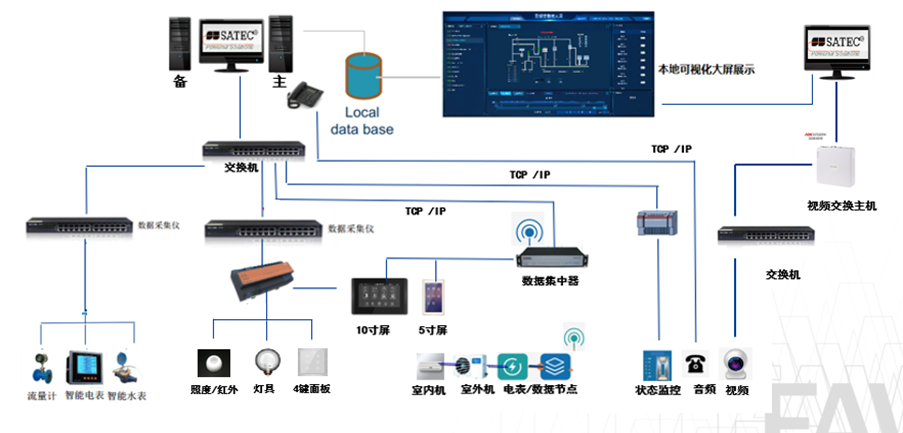Building Intelligent Monitoring System
Release Date:
2025-08-15
Building Intelligent Monitoring System Solution
The building intelligent monitoring system starts from energy saving and emission reduction, focusing on intelligence, technology, and humanization. It mainly includes four subsystems: energy consumption data collection and analysis system (including electricity, water, heating, etc.), elevator monitoring system, intelligent lighting control system, and centralized air conditioning monitoring system.
Main Management and Technological Innovations of the Building Intelligent Monitoring System
■ Lighting Management: 5-inch and 10-inch screens replace traditional hard switches to achieve touch-based scene settings; automatic control of lighting switches based on illumination intensity and occupancy detection through a two-in-one sensor; infrared sensors in restrooms enable automatic management of public areas to achieve energy-saving goals; equipped with mobile app remote control functionality.
■ Air Conditioning Management: Under the traditional multi-split system mode, each indoor unit independently calculates electricity consumption and billing, providing detailed regional electricity cost comparisons to guide energy-saving management; energy-saving technical management methods such as cooling, heating, prohibition settings, minimum and maximum temperature settings; fault search and status display for all indoor units to facilitate maintenance and improve efficiency; schedule settings and centralized switch control.
■ Elevator Management: Real-time monitoring of elevator status through video interface; audio interface enables intercom function inside the elevator; display of elevator operation and fault status; cumulative storage of operation energy, usage count, fault information, and other data.
■ Energy Management: Monitoring and statistics of main building energy by water, electricity, heat, etc., divided by floor and area, with abnormal energy alarms to improve incident response efficiency. Accumulated statistics by zone, time, and energy category provide direction and targets for energy-saving management and data for energy usage forecasting.
Main System Architecture of the Building Intelligent Monitoring System

Keywords:

